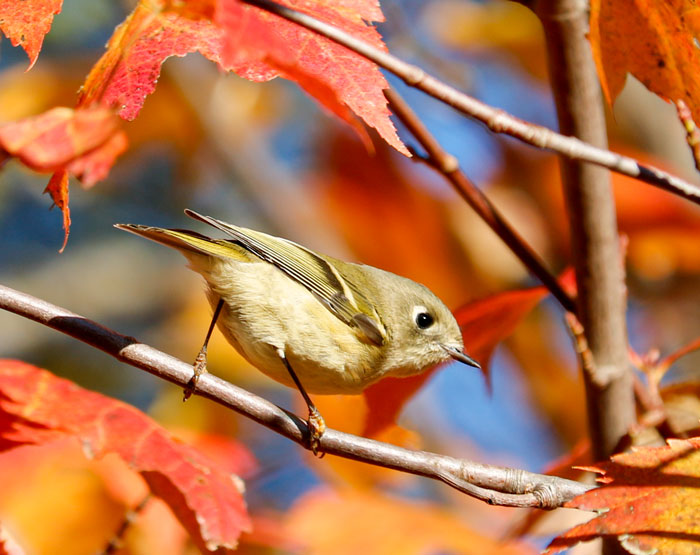
Last fall, I had the opportunity to view a variety of migrating bird species come through the property. Of the several species of birds I observed, many were some that I was quite familiar with, but a few were new to me. One such bird was my frequent observation of a male ruby-crowned kinglet, a very small songbird in the kinglet family.
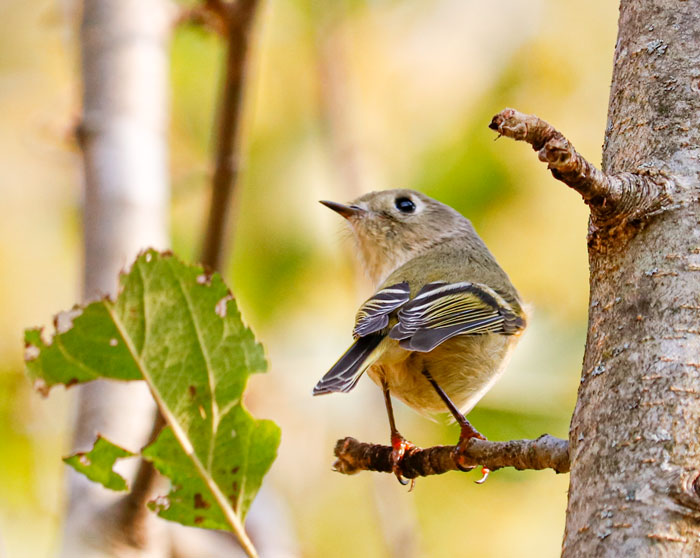
If you are a photographer and familiar with this species of bird, you know that the ruby-crowned kinglet is considered to be a frustrating species for bird photographers. Even though I am very patient when out in the field, believe me, my experiences with this bird were no exception. Although they are one of the few bird species that are fearless enough to come close to humans, they are extremely active birds. Just as I thought I had a nice shot, he was off to another branch or had flown off to a totally different tree and disappeared. A few times due to his curious nature, he would come and perch pretty close to me, but I would have to say the majority of his energy was spent searching for food. He was taking full advantage of the availability of insects on the warm and mild fall days in order to fuel up for his journey down south for the winter months. However, I was delighted to observe this interesting and entertaining bird forage swiftly and lightly through the foliage as well as get the chance to take at least a few photographs.

I would like to share a few interesting facts about the ruby-crowned kinglet Regulus calendula, as well as a few photographs from my weeks, spent with this energetic bird. Of the several blurry or empty shots from my sessions, these are the best photographs that made the final cut. I hope you enjoy.
Ruby-crowned Kinglet Size & Shape
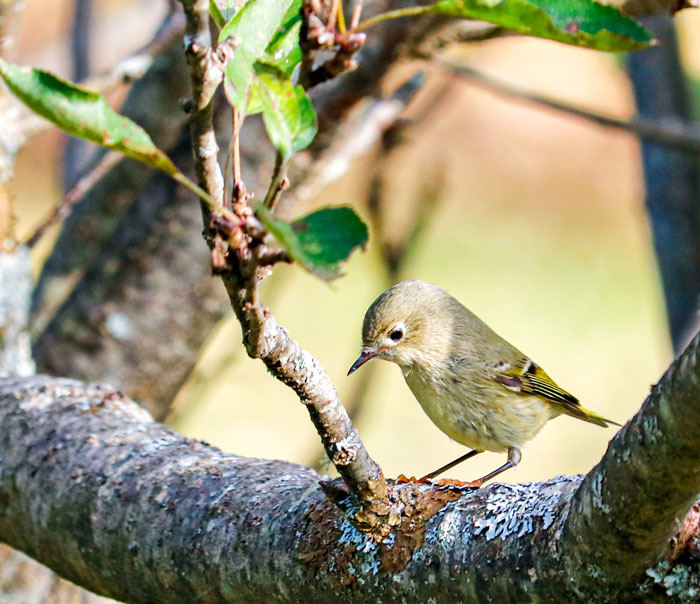
Kinglets are very small songbirds with relatively large heads, almost no neck, and rather thin and stubby tails. Their bills are very small in size, thin and straight.
Ruby-crowned Kinglet Colors & Pattern

Ruby-crowned kinglets are olive-green in color with a prominent broken white eye-ring and white wingbar. This wingbar contrasts with an adjacent blackish color bar located on the wing.
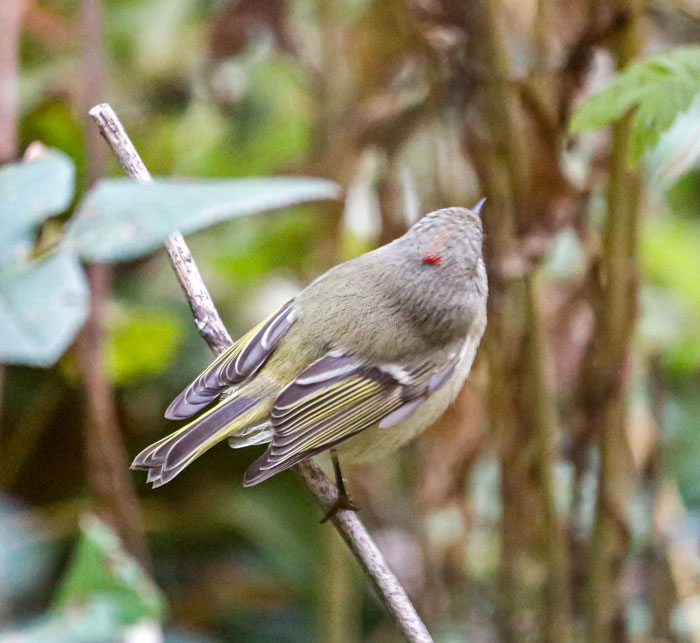
The “ruby crown” is only found on the male and is only occasionally visible as it is usually concealed by the surrounding feathers. The red crest is raised when a bird is agitated or in display. Immature birds are similar to adult females since young males lack a crown patch. In the photograph above, this is the closest I had come to seeing this scarlet-red crown patch.
As they say, good things come to those who wait. It is now the spring of 2022 and I spotted at least three of these birds on this particular day. This male wasn’t shy at all and I was able to take a few shots with a better view of his scarlet-red crown patch.
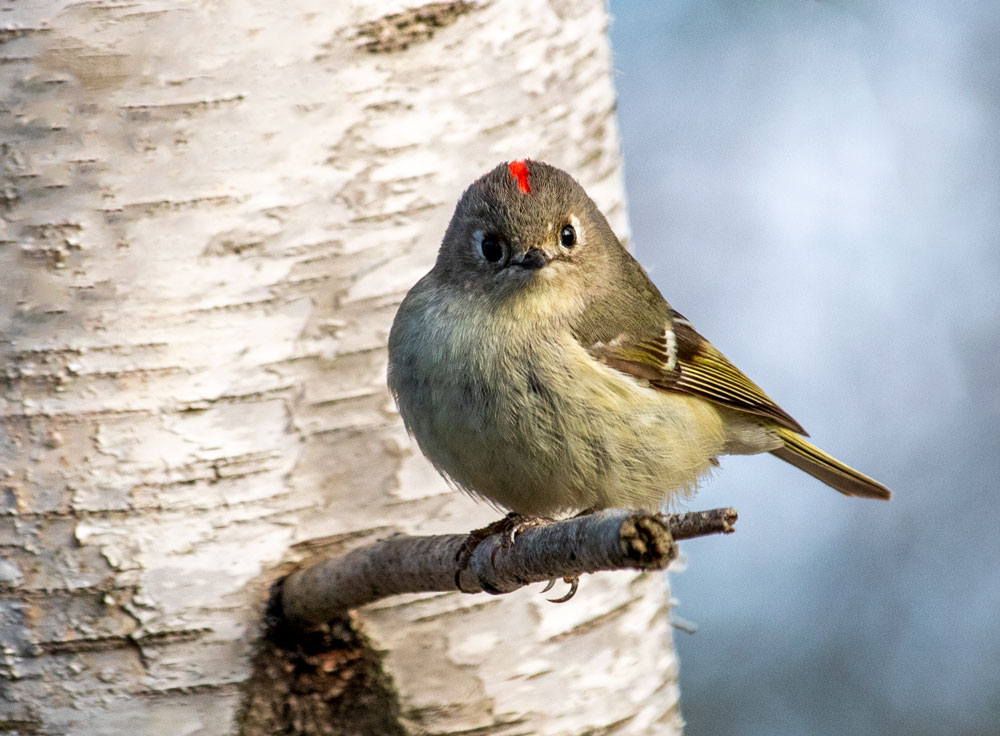
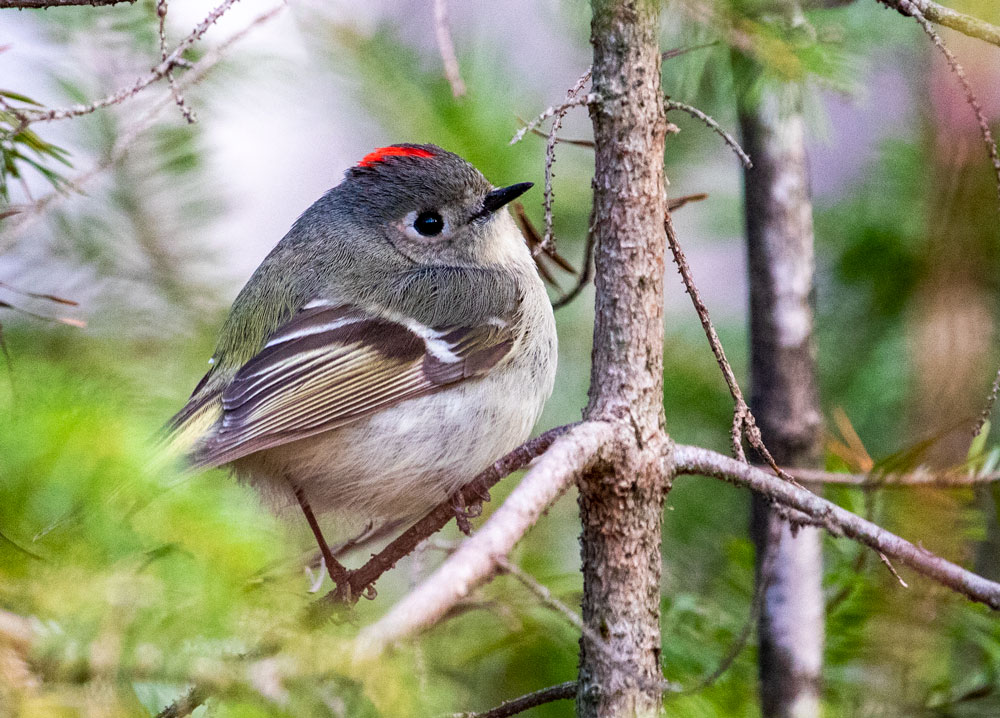
Ruby-crowned Kinglet Habitat
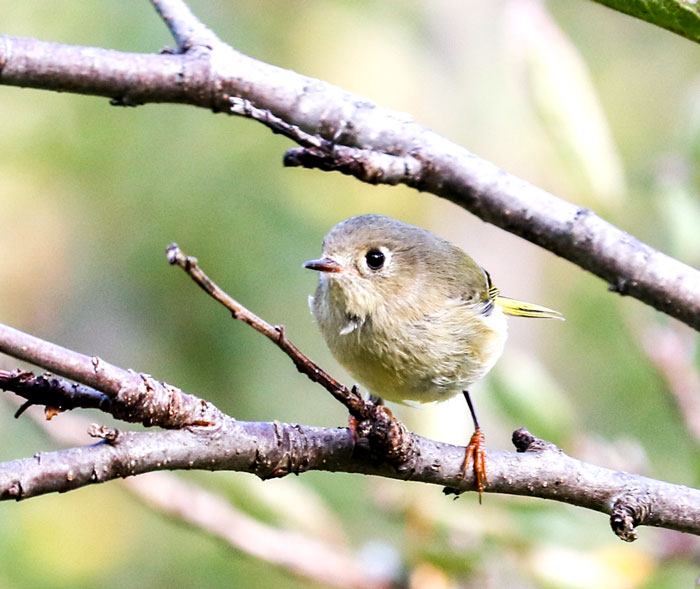
During the summer, these birds are commonly found in spruce-fir forests in the northwestern United States and across Canada. They also live in mixed woods, as well as isolated trees in meadows, coniferous and deciduous forests, mountain-shrub habitats, and floodplain forests of oak, pine, spruce, or aspen. These birds nest high in trees and tend to prefer older, taller, and denser stands to younger ones. During migration and winter, they are commonly found in woods and thickets across most of the continent.
Ruby-crowned Kinglet Feeding Behavior & Diet
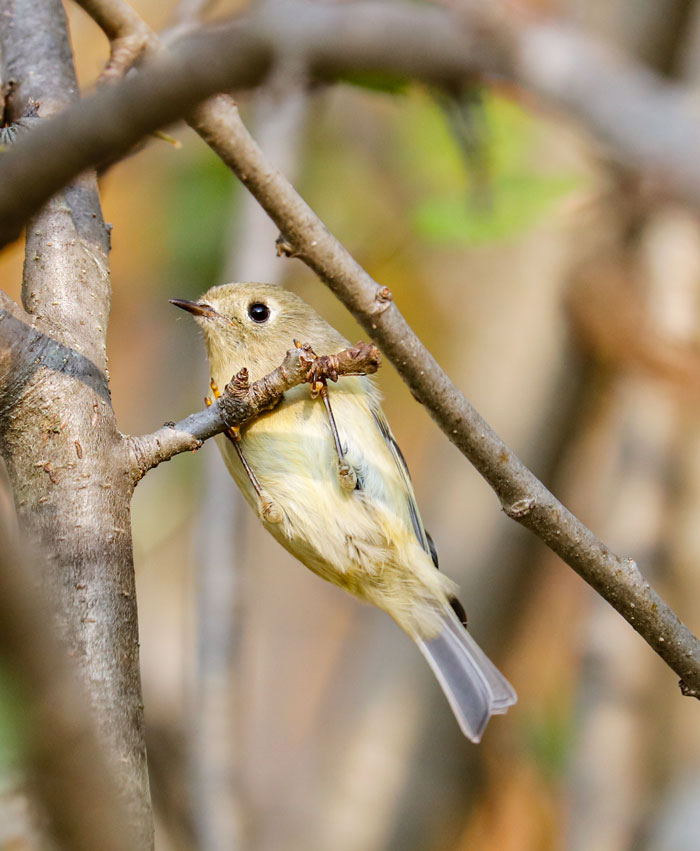
These kinglets are very quick, restless, and acrobatic while moving through foliage. Their flight can be described as swift, jerky, and unpredictable as they flick their wings constantly as they go.
These birds forage actively at all levels, from treetops to low brush, as they examine foliage, twigs, and major limbs for sources of food. They often hover while taking items from foliage, and will sometimes fly out to catch insects in mid-air.
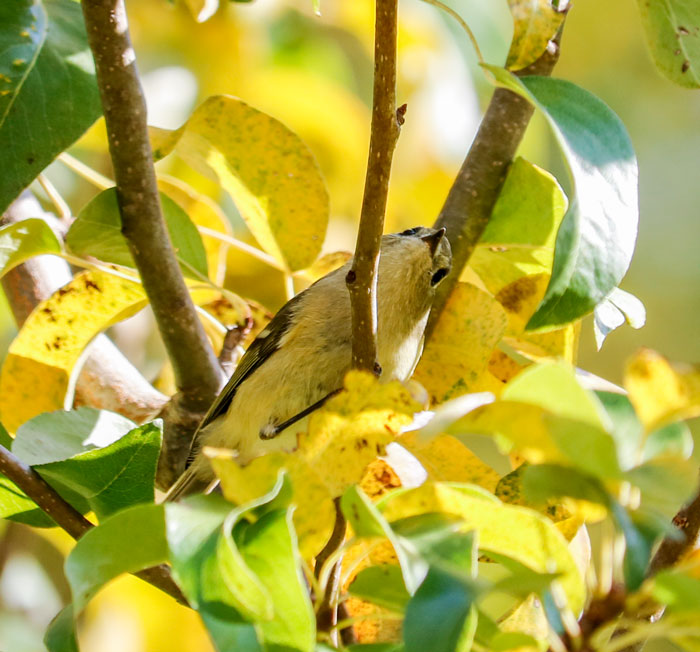
They feed mostly on insects during all seasons. These birds focus on whatever is available such as many small beetles, flies, leafhoppers, true bugs, caterpillars as well as many others. They also eat spiders and pseudoscorpions; their diets include the eggs of insects and spiders. During the winter months, these birds will eat some types of berries and seeds as well as suet. They will sometimes consume tree oozing sap or visits flowers, possibly for their nectar.
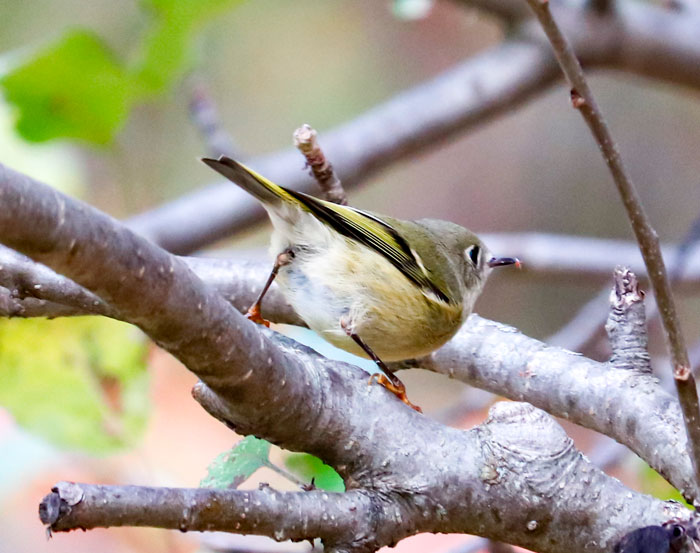
Ruby-crowned Kinglet Song & Calls
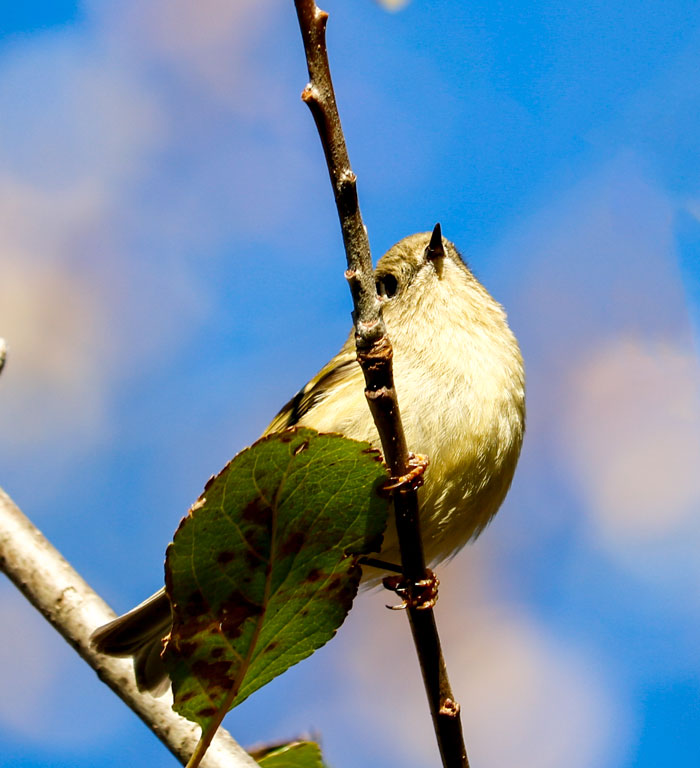
The song of the ruby-crowned kinglet male is a jumbled but distinctive song that builds to an incredibly loud ending, especially when you take into consideration how small these birds are. The song lasts about five seconds. It will start with soft, high notes that accelerate into a musical twittering, and then abruptly shifts into a loud series of two or three-parted notes.
The call is a harsh, fast, two-parted scold. They may also give a long, chattering series of short notes. Females sometimes do this as the male sings; females may also use it as an alarm call.
Ruby-crowned Kinglet Nesting, Eggs, and Young
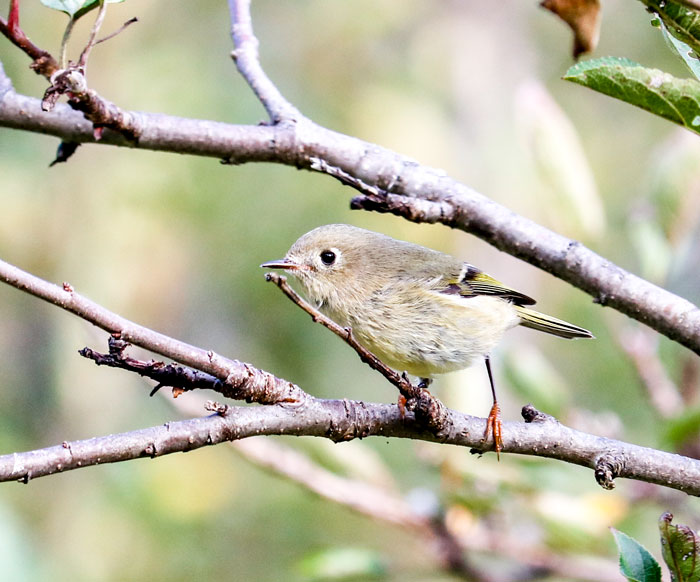
During courtship, males will crouch horizontally, flutter their wings and raise their scarlet-red crown feathers while singing. The nest will usually be constructed in spruce or another type of conifer. The average height is forty feet above the ground, can also be up to ninety feet, as well as very low in far northern forests where trees can be short. The nest is attached to hanging twigs below a horizontal branch that is protected by the foliage above. The female builds a deep hanging cup of moss, lichen, bark strips, spiderwebs, twigs, rootlets, and conifer needles, lined with feathers, plant down, and animal fur.
In the Pacific Northwest, they will have nine to ten eggs, sometimes seven to twelve, quite an incredibly large clutch for such a small-sized bird. Eggs are whitish to pale buff in color, with brown spots often concentrated at the larger end. Incubation is done by the female only, for about thirteen to fourteen days. The male may feed the female during incubation.
In order to draw predators away from their nests, kinglets will often perform a “broken-wing” act also known as distraction display or diversionary display. This is an anti-predator behavior used to attract the attention of an enemy away from nests. These birds will defend their nests fearlessly, mobbing an intruder such as a cat squirrel, or human.
Both parents will feed the nestlings. Young leave the nest about sixteen days after hatching and they will have one brood per year.
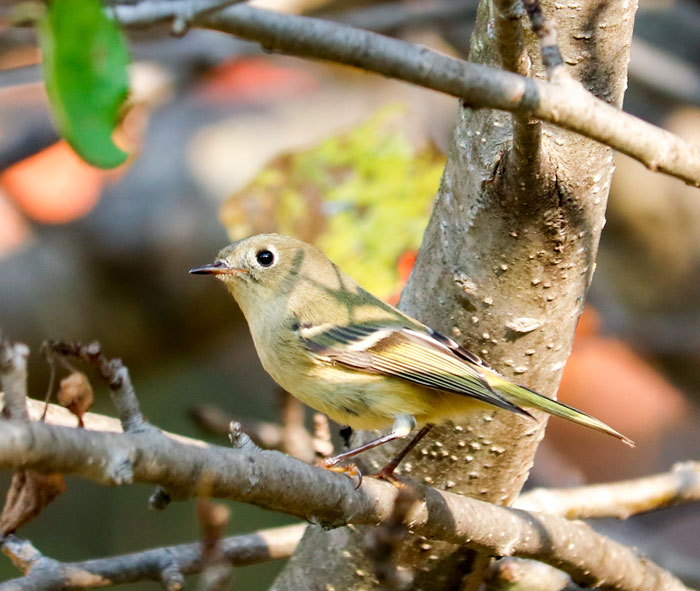
Ruby-crowned Kinglet Migration
The ruby-crowned kinglet is considered to be a short-distance migrant. These birds breed across far northern North America as well as the western mountains. Most of these birds migrate to the southern and southwestern United States and Mexico for the winter, but some mountain populations in the West will move to lower elevations during the colder months.
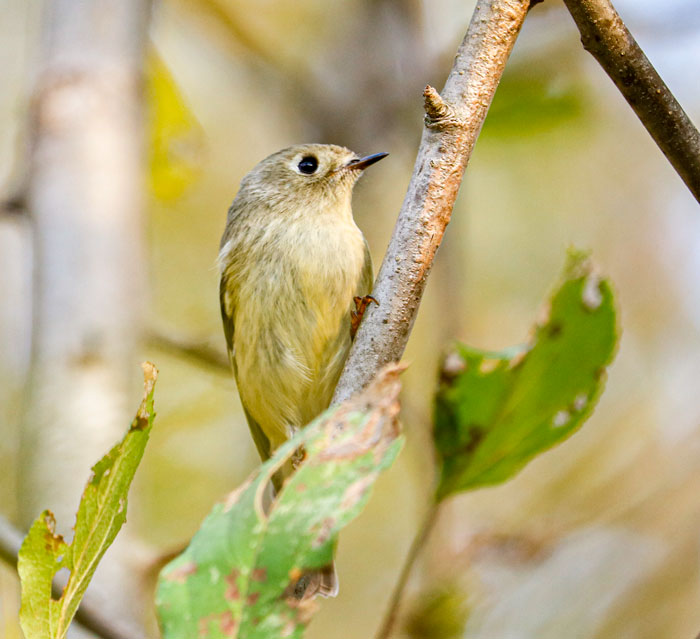
Although not an easy feat, hopefully, when these birds return this spring, I will have another chance to photograph these lively birds again and catch a better glimpse of that beautiful ruby crown.
Thank you for reading and I hope you enjoyed learning about the ruby-crowned kinglet. If you have anything to share, such as your photographs and experiences with these tiny and fearless-spirited birds, please feel free to leave a comment below. I would love to hear from you.
Resources used for this post:
allaboutbirds.org & audubon.org
Great Story and Images Laura! They are probably the most difficult small song bird to photograph but such beautiful little birds :
Thank you so much, Kerri! I’m glad you enjoyed and yes, these little birds definitely keep you on your toes!
I am having a very strange experience with one of these birds. A male is very agitated and keeps trying to fly into my kitchen windows. I contacted the local wildlife center and was told to block the windows so it can’t see in as it is confused. I did that and it found an electrical cord hanging that allowed it to still peek through the top of the windows, It has been here all day and won’t leave. I am concerned but not sure what to do. I have some good up close photos as I stood face to face with it at my window.
I agree, this is a strange situation. Males exhibit this behavior during the breeding season when they are establishing territories. This shouldn’t be the case as this isn’t the time of year for this type of behavior. I found this information for you and I hope this helps. Hopefully, he will get the hint and move on. Please let me know how you make out.
https://www.thespruce.com/stop-birds-attacking-windows-386449